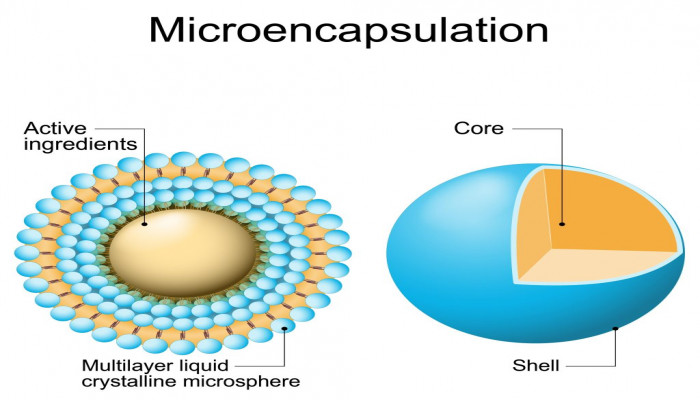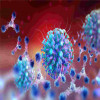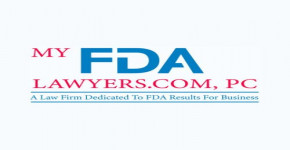 Launch apps instantly. Claim $200 credits on DigitalOcean
Launch apps instantly. Claim $200 credits on DigitalOcean
Preparation Methods of Microspheres
Written by Alex Brown » Updated on: March 26th, 2024

There are various techniques for the preparation of microspheres, and the selection of an appropriate method depends on the physicochemical properties of the drug. Currently, the most widely used methods include emulsion evaporation, phase separation, spray drying, and hot-melt extrusion, each with corresponding products on the market.
Emulsion Evaporation Method
The solvent evaporation method is the most widely applied technique for microsphere preparation. In industrial production, it can be carried out using a reaction vessel or a static mixer, each with its advantages and disadvantages.
Preparation Techniques in a Reaction Vessel
For lipophilic drugs, the water-in-oil (O/W) emulsion method is employed. This involves dissolving lipophilic raw materials in an organic solvent as the oil phase, dissolving the emulsifier polyvinyl alcohol (PVA) in an aqueous medium as the water phase, and then injecting the oil phase into the water phase under high-speed shearing conditions to form water-in-oil (O/W) emulsion droplets. The organic solvent in the emulsion is evaporated under physical conditions, leading to the solidification of droplets into microspheres.
For hydrophilic drugs, the water-in-oil-in-water (W/O/W) multiple emulsion method is used. This involves dissolving the water-soluble drug in water as the inner water phase, dissolving lipophilic excipients in dichloromethane as the oil phase, and then injecting the oil phase into the water phase under high-speed shearing conditions to form oil-in-water (O/W) primary emulsion. This primary emulsion is added to an outer aqueous phase containing the emulsifier polyvinyl alcohol (PVA) under high-speed stirring conditions to form water-in-oil-in-water (W/O/W) multiple emulsion. The organic solvent in the emulsion is evaporated, leading to the solidification of the multiple emulsion into microspheres.
Preparation Techniques in a Static Mixer
Traditionally, reaction vessels are used for these processes, but they come with a multitude of parameters and stability issues. Static mixers can alleviate some of these problems. These mixers allow fluids to flow through a pipeline, impacting various types of plate elements to increase the velocity gradient of the fluid cross-section, creating turbulence. The laminar flow of fluid in the pipeline generates a “cut-twist-separate-mix” movement, ensuring the uniform dispersion of the fluid and achieving good mixing effects.
Taking the preparation of hydrophobic drug microspheres as an example, where the oil phase and water phase are immiscible, continuous turbulent mixing of the two fluids leads to rapid precipitation, resulting in the formation of microspheres. During the preparation process, different blades are selected based on the flow rate and viscosity, allowing the production of microspheres with varying particle sizes, ensuring good uniformity of the product.
Emulsion evaporation is influenced by various factors affecting microsphere quality attributes, such as drug properties and solubility, the amount and composition of polymer materials, drug loading, the choice of organic solvent, properties and quantity of emulsifiers, emulsification temperature, mixing rate, viscosity, and ratio of the aqueous phase to the oil phase, among others. With numerous key quality parameters, the scale-up of the process becomes challenging, leading to high research and development costs.
Phase Separation Method
The principle of the phase separation method for microsphere preparation involves adding a third component, usually an organic non-solvent, to the polymer-drug-solvent system under stirring. This results in a decrease in the solubility of the polymer with the addition of the third component, causing phase separation between the solvent and the polymer at a specific point. This leads to the formation of very soft drug-loaded droplets. The system is then transferred to another organic non-solvent, solidifying the microspheres.
The phase separation method is essentially an extraction technique, a physicochemical phenomenon where many factors can affect product properties. These factors include the intermolecular interactions of polymer materials, the rates and durations of each step in the preparation process, and their close correlation with the quality attributes of microspheres.
The advantages of the phase separation method for microsphere preparation include the avoidance of expensive equipment, ease of batch processing, and good sphericity for water-soluble drugs. However, its disadvantages include the tendency of microspheres prepared by phase separation to aggregate and difficulty in dispersion. Additionally, there may be a high residual level of organic solvents, and ensuring sterility is challenging.
Spray Drying Method
The spray drying method for microsphere preparation involves spraying liquid raw materials into a hot drying medium, transforming the raw materials into dry powder. The specific preparation process can be divided into three steps: the atomizer atomizes the solution of raw materials into small liquid droplets; the drying gas solidifies and dries the small liquid droplets; and the dried particles are separated from the drying medium.
Advantages of the spray drying method include its applicability to various drugs, especially bioactive proteins and peptides. During the preparation process, by controlling the equipment, minimal loss of activity can be achieved. As the process does not use an external aqueous phase, drug loss is minimized, and encapsulation efficiency is high. When preparing temperature-sensitive peptides, adjusting the type or temperature of the drying gas can be used to control the process.
Disadvantages of the spray drying method include the adhesion of a significant amount of incompletely dried raw materials to the inner walls of the spray dryer. This results in material loss. The drying temperature significantly affects the microspheres, as high temperatures may cause deformation and aggregation, while low temperatures may lead to high residual solvent levels and poor control of microsphere size.
Hot-Melt Extrusion Method
The hot-melt extrusion method is a commonly used technique for preparing particles, pellets, and implants. Similar to the spray drying apparatus, the hot-melt extrusion method does not require the dissolution of raw materials; instead, the mixture of raw materials can be directly subjected to hot-melt extrusion.
For the preparation of microspheres using the hot-melt extrusion method, a predetermined amount of drug and excipients is placed into the hot-melt extrusion apparatus. The mixture is heated and melted, extruded through a die plate, rapidly cooled, and formed into solid strips. These strips are then crushed to produce microsphere products.
Advantages of the hot-melt extrusion method include the avoidance of organic solvents, eliminating solvent residue issues, ensuring safety and non-toxicity. It offers high productivity, strong continuity, and an encapsulation rate close to 100%.
Disadvantages of the hot-melt extrusion method include the need for high temperatures throughout the extrusion process. This makes it unsuitable for temperature-sensitive protein and peptide drugs, which are, ironically, ideal candidates for microsphere formulations. As the method involves the direct hot-melt extrusion of raw materials, strict quality control of active drug components is required, directly affecting the physicochemical properties and efficacy of microspheres.
Novel Microsphere Preparation Methods
Microfluidic Technology
The microfluidic technology for microsphere preparation involves producing droplets through microchannels. It utilizes the driving force of volume or pressure to allow immiscible continuous and dispersed phases to flow separately in their respective channels. The phases meet at the intersection of the channels, and the instability of the interface, induced by squeezing or shearing the continuous phase against the dispersed phase, causes it to rupture, generating dispersed droplets.
Microfluidic technology is a promising new method for preparing uniform particles, allowing control of microsphere size and distribution with a simple one-step process. Taking the single emulsion method as an example, the preparation of risperidone microspheres involves dissolving the drug and polymer in dichloromethane to create the oil phase. An aqueous solution containing the emulsifier polyvinyl alcohol (PVA) serves as the water phase. Two syringes pump the oil and water phases into the microfluidic channel, resulting in microsphere production after the reaction in the microchannel.
Advantages of microfluidic technology include the ability to control microsphere size by changing flow rates, the ability to produce multiple emulsions through sequential shearing emulsification in the microchannel, high reproducibility for large-scale production, and a closed preparation system that eliminates environmental degradation of the drug, ensuring sterility.
Disadvantages of microfluidic technology include the difficulty in cleaning the equipment and the need for improvement in production efficiency to meet industrial production requirements.
Membrane Emulsification Technology
Membrane emulsification has become a research hotspot in recent years due to its mild preparation conditions, low cost, high flux, and good repeatability. Although microsphere products prepared using membrane emulsification technology are not yet on the market, the method has been widely applied in the preparation of microsphere formulations.
The working principle of membrane emulsification is that the dispersed phase passes through the micropores of the membrane under the action of external pressure, forming droplets on the surface of the membrane. With the washing action of the continuous phase flowing along the membrane surface, when the diameter of the droplets reaches a certain value, they detach from the membrane surface, forming an emulsion. By controlling the dispersing pressure and membrane pore size, the method achieves monodispersity in droplet size to prepare uniformly sized microspheres.
Advantages of membrane emulsification technology include the dependence of microsphere size on membrane pore size, ensuring uniformity and controllability, good batch-to-batch reproducibility, mild reaction conditions suitable for sensitive protein and peptide drugs, and excellent stability of the emulsion, minimizing issues like aggregation and coalescence. The process is simple, easy to scale up for industrial production.
Disadvantages of membrane emulsification technology include the overly uniform size of microspheres, affecting the drug release period, and the potential risk of burst release. Production equipment requires membranes with sufficient mechanical strength, stable pore sizes, easy cleaning, and resistance to clogging, imposing high requirements on the equipment.
In conclusion, the production of microsphere formulations involves complex processes, difficult control, and requires custom equipment. Long-term production requires continuous improvement of production equipment. Additionally, quality control is challenging, with particle size distribution, drug loading, drug release rate, burst release issues, sterility, and residual solvents being the main factors affecting microsphere quality. Finally, addressing capacity, consistency, and equipment issues is essential for successful microsphere production.
Surface Treatment of Microspheres
The current administration routes for microsphere products are mainly intramuscular injection and subcutaneous implantation, with the hope of utilizing the microspheres’ sustained-release function. However, the sustained release is not only related to the polymer material of the microspheres but also to their presence in the body. If the microspheres are dispersed at the administration site, increasing the contact area with the microenvironment of the administration site, the degradation rate will be affected, posing a risk of inflammation.
Based on this, technologies for the surface treatment of microspheres have emerged. Currently, there are many methods for surface treatment of microspheres, but the goal is consistent: to reduce the hydrophilicity of the microsphere surface, allowing the microspheres to aggregate into large particles in the body, reduce microsphere diffusion, and lower the risk of inflammation.
The surface treatment of microspheres aims to keep them small in size outside the body and aggregate to form granules of 500 μm inside the body, ensuring prolonged drug release. Currently, the main reagent used for surface treatment, apart from surfactants, is ethanol. Typically, ethanol is mixed with an alkaline solution as the treatment solution for surface treatment. However, regardless of whether surface treatment is performed under acidic, alkaline, or neutral conditions, it cannot break the microsphere particles in the form of pores, holes, or channels. Microspheres treated on the surface may interact with each other under physiological conditions of 37-40°C, forming cohesive aggregates.
Currently, surface treatment of microspheres is mainly used for ocular microspheres. This is because methods of administration, including intravitreal injection, can lead to rapid dispersion of small particles, causing visual impairment and rapid clearance by the lymphatic system and phagocytosis. Surface-treated microspheres, after administration, aggregate at the administration site, do not easily disperse, and do not cause inflammation. Another method to prevent microsphere dispersion in the eye is to use a viscous agent to aggregate the microspheres, altering the drug release rate.
Copyright © 2024 IndiBlogHub.com Hosted on Digital Ocean









Post a Comment
To leave a comment, please Login or Register